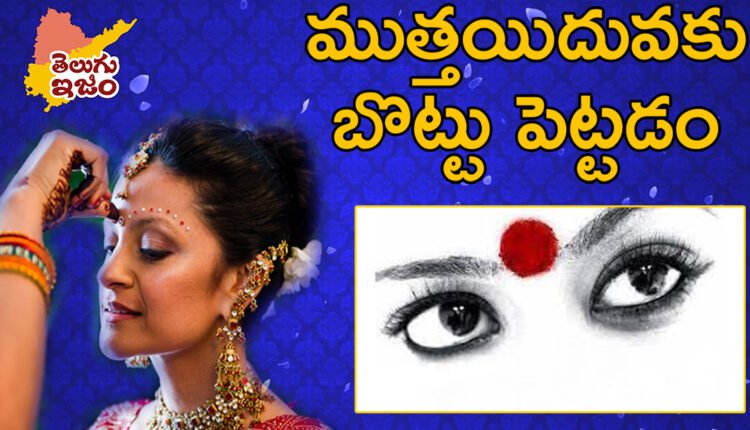Bottu : A Sacred & Significant Practice In Hindu Tradition
Bottu : Applying a tilak or blob on the face is indeed a Hindu tradition with cultural and religious significance. While it is predominantly seen in Hinduism, it is important to note that not all Hindus follow this practice, and there are variations within Hindu communities.
The tilak or blob holds different meanings and uses within Hindu traditions:
- Symbol of Aiydothanam: In Hindu tradition, especially among married women, wearing a tilak is considered auspicious. It is believed to symbolize Aiydothanam and married women are encouraged to wear it regularly. It is considered part of their adornment and religious observance.
- Various Usages of Blob: The word “blob” or “bottu” in Telugu language refers to a drop or mark on the body. In Hindu customs, a vertical tilak is associated with Vaishnavism, while a horizontal tilak is associated with Shaivism. “Talibottu” is worn by brides as a symbol of marriage, and “bottudaram” refers to the Mangalsutra worn around the neck.
- Spiritual Significance: Wearing a tilak is believed to have spiritual benefits. It is associated with the Ajna Chakra (third eye) and the Anahata Chakra (heart center). The tilak is seen as a way to purify oneself, cultivate devotion, and promote honesty. It is also believed that seeing someone wearing a tilak can invoke a sense of holiness and respect.
- Symbol of the Divine: The tilak is considered a symbol of the divine. It represents the connection between the individual and the supreme deity, Lord Brahma. The forehead, where the tilak is applied, is considered the Brahmasthan (center of Brahma) and holds great significance.
- Different Colors and Meanings: Traditionally, different castes and communities within Hinduism wore tilaks of different colors. For example, Brahmins wore white sandalwood, Kshatriyas wore red saffron, Vaishyas wore yellow saffron, and Shudras wore black bhasma or kasthuri. Different sects and deity worshippers also have specific tilak traditions.
- Sign of Politeness and Respect: Applying a tilak is often seen as a gesture of politeness and respect. It is customary to apply a tilak when inviting guests or honoring elders. By offering a tilak, it is believed that one is acknowledging the presence of divinity in the person being welcomed.
Bottu & Importance
It is important to remember that practices and customs can vary within different Hindu communities and regions. While the tilak tradition is predominantly associated with women, men can also wear it as a symbol of their belief in God and adherence to Dharma (righteousness).
Also Read : Snathakam : An Important Ceremony Performed Before Wedding

